Michelle Bates, author of Plastic Cameras: Toying with Creativity joins us for an exclusive interview where we ask her about her experience with Holga, writing her book, personal and professional photography and for advice to photography students. Let us enter the realm of Holga!
This is a transcription of the interview conducted by Isabelle Simons.
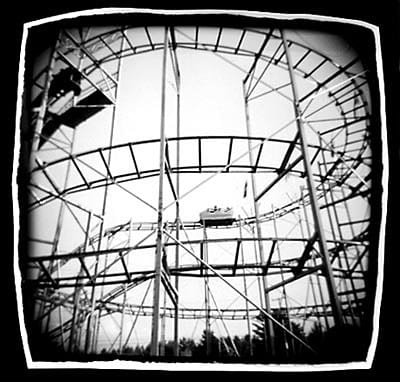
How did you first discover Holga, what were your initial thoughts about them?
So I heard about a place called the Main Photographic Workshops, which is now known as the Main Media Workshops, when I was in college and I was in Massachusetts and a friend of mine brought me a catalog and I signed up for a couple of classes. I asked for it as a graduation present, I went up there the summer after I graduated college and they used them there as a teaching tool because these cheap toy cameras, the Holga, kinda leveled the playing field. So even then, when cameras were all film and they didn’t even all have auto focus and stuff like that, there was still a difference between the haves and the have-nots and those who had fancy cameras and those who didn’t. So giving people all the same type of camera, cheap, kind of allowed people to just play with composition and things like that without worrying about the cameras. So they were used as a teaching tool there and I got intrigued by them. Basically what happened was luck -which is a lot of things in art and science happen by luck. If you’re smart enough to notice these things, like when I took my rollercoaster picture (on my website) I was like “Wow! That’s kind of a cool picture!” and when you’re first shooting in a different format or just starting out, I feel like everything is an accident and so if you find something that excites you, then you’re on to something.
Holga camera uses medium format film, the standard square format is 2.25” negative. Which is a lot larger than the 35mm. The images made by the Holga, you can see this sort of roundy format, the way I shoot them and those are sort of out of the bounds of how you would normally use that format of film. I saw that image, I liked that image, I printed that image normally and it came out with these straight line edges and it didn’t include the whole image. So I cut out of cardboard a negative carrier that would show the whole image. So this was a whole long way of going “I’m intrigued by this image, there’s more in this image that I see that I like” so I created this roundy format and I printed that and it just worked. It was fun and people liked it, so I made more fun, goofy pictures that summer and I was off! Being around people who gave feedback saying I was on the right track of something cool was huge because I didn’t know anything; I was brand new to photography and around world-class photographers who were like “oh what you’re doing is really interesting.” And not that long after that, I did a workshop that was a National Geographic photographer workshop and the teacher at the end gave me feedback that was something along the lines of, “you’ll never be a National Geographic photographer, but you got this Holga thing down.” and I did the Holga group photo for this group. I had no ego about it – it was goofy and ridiculous and made people smile. I got good feedback from the images. Just “let me keep going with it”.
An appeal of the Holga is its simplicity. It invites people to just get out there and take photographs. How do you find that experience to influence the type of photos you take compared to photos taken with pricier equipment?
I could go on for a little while about this. When I started out, I was all about the goofy, fun pictures. That’s a good starting place for Holga and all the toy cameras for a lot of people because it sort of appeals to that kind of imagery, but over the decades, I would have a Holga camera with me and shoot my goofy things (of which I have lots). But I’d also shoot trees, or different types of things and after a while you start to notice you have a collection of images. And to notice what you’re capturing and see what’s of interest, kind of like what I did with the very first image but continuing to do it in a more intentional way. So noticing “oh hey look, I have a whole collection of very interesting trees or whatever, and then another series of the image of the water on steps.”
When I was working with a gallery we sort of explored that and came up with these “natural elements in urban environments”. And this Urban Oases series. Then I started shooting in these urban environments, and I liked expanding what I could do with these cameras. That’s what I’ve done personally and I still love my very goofy photos, but I also love the other ones and I think it’s important to show people you don’t have to be constrained by format and that’s the whole point of the book [Michelle’s Book “Plastic Cameras: Toying with Creativity“]. There are different types of pictures taken with Holga; war, photojournalism, Afghanistan, commercial photoshoots, and everything in between. That’s kind of my point; you can use it for whatever you want but don’t feel limited by what the camera tends towards.
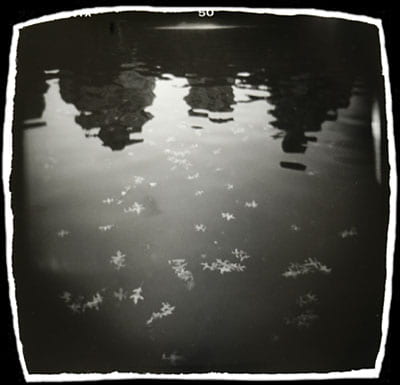
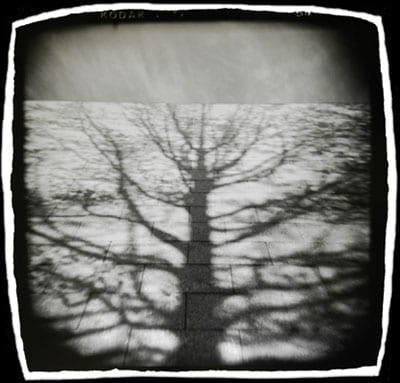
Do you find there’s a stigma against it?
I’m sure there is. In between the editions of my book, I was at a gallery in Seattle and Michael Kenna (who’s one of the best known photographers in the world) had a show there and he had a calendar. I was flipping through the calendar, saw the last picture and I said to my friend “That looks like a Holga picture!” (he always shoots square). I couldn’t believe it. He was there and I asked him “Is this a Holga picture?” and he replied with “Would I shoot with a Holga?” and I was like “I don’t know, would you?” and he said “Of course! I love the Holga!” I was gobsmacked cause this was Michael Kenna and he also shoots with a Holga! And he has up until then just been slipping Holga pictures into his gallery shows without mentioning it and I got him to let me put him in my book; I kind of outed him.
This was when you were writing the book?
In between editions, I showed him the first edition so he had something to go on and I included him in the second edition. Then he put out an entire book of Holga pictures in his own book and that can only help legitimize it.
If you come into a gallery with a bunch of Holga images that look like every other Holga image, they’re not going to be interested. You have to have a strong, interesting artistic vision that transcends the fact that they were made by Holga for a gallery to be interested. There are also trends, so there are times a series of Holga images might be hip but people might be like “No, we’re past that” but it might come back again.
What inspired you to write the Plastic Cameras book? Was it to get the information out there and advocate for Holga or was it just inspiration to talk about Holga?
Both! I had started teaching workshops at Photo Center Northwest in Seattle. There’s a guy named James Wood who’s a photographer, used to teach in the Art Institute in San Francisco, who I met at various conferences. So I would go to a lot of conferences, trade shows, PhotoPlus Expo in NY and Society for Photographic Education and just meet and talk to people and he got me to come into his classes and start talking about my work and by letting me talk taught me that what I said about my work was interesting which was incredibly valuable. Which led to teaching workshops and I got involved with Freestyle Photographic Supply cause I met somebody who ended up later working at one of these trade shows by showing my work. They created this advisory board of photographic professionals, which brought me on as the Holga person and through that I had the opportunity to teach at the Santa Fe Workshops. In the meantime I wanted to do more writing and I had started doing articles about totally random stuff, but a publisher saw my workshop at Santa Fe and explained that they’d been looking for someone to write about toy cameras. So they contacted me saying they’ve “been wanting to get a book about toy cameras and you had this week-long workshop so you may be the person to do that”. I read the email and jumped up and down and ran around in circles and was like “Sure! I don’t know how to write a book, but sure!”
That’s why Mary Ann Lynch saved my butt and edited the book and basically taught me how to write and edit. And that was lucky because she was a professional writer and knew the topic really well. She helped me and I am always very appreciative of her for that.
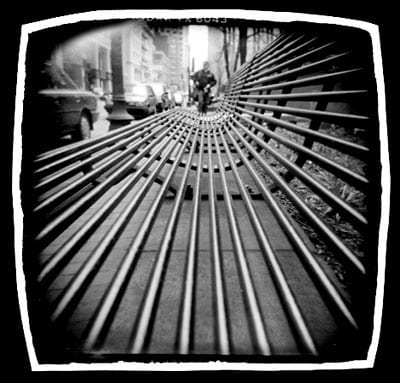


Most students are just getting into serious photography as a medium now, how has your approach to photography changed with time and experience from when you first started to now?
It has expanded and I have different sides of my photography life, My main two sides are the “Holga Queen” as they sometimes called me back in the day and then shooting performance and theatre and performers. And they’re mostly completely separate and that’s all digital and I keep buying new gear and taking advantage of the new technologies. I continue to do things the exact same way with my Holga. I shoot with film, I process the film, I print in the darkroom and I see no need to upgrade or change that. Sometimes I’ll scan my negatives to see what I’ll get before I go into the darkroom, but my prints are always darkroom. I have done exhibitions where I shot with other cameras over the years for different types of subjects that either technically the Holga wasn’t up to or just felt like I should shoot something differently. So it’s one of my tools but it’s my muse.
Shooting Holga, processing the film, printing it in the darkroom, nothing has changed and it never will. I can still do that the exact same way for the rest of my life as I have been doing for the past 30 years and that is really nice. Because I also have good skills in the darkroom and those skills have built up over time and I’m good at it. On the computer everyone is floundering and trying to catch up. Some people get good at photoshop but are spending more time in front of the computer than the rest of us already are. How do you want to be spending your time, and where do you get your energy and what’s your artistic medium that you want to be working? I like the darkroom.
There’s a difference between setting out to do something artistic vs setting out to do commercial. What’s commercial photography to you?
Mostly somebody hired me. I go to photograph a show of the Bellingham Circus Guild or the Moisture Festival. I go in, I photograph the show, make the pictures available for them for archive, for the performers, for publicity and y’know not every time I shoot that I’m getting paid because I love doing it as well. It’s also an archive of the community over the years and sometimes there’s crossovers but that’s the performance side of the world. Sometimes people hire me to do studio shoots of portraits or promotional stuff for shows. And I have done exhibitions of that work because that work can also be beautiful, and thematic. I’m not really shooting people in normal clothes, so usually the images are pretty interesting and so that has an artistic merit as well. So I’ve done shows like that. But there’s sort of that separation of the purely fine art pictures that are pretty much just for hanging on walls and the ones that have other uses as well.
How do you get into that? Do you have any advice for any students who are trying to start trying to get into galleries or go commercial?
Portfolio reviews are really great. Mary Virginia Swanson has published a book about how to prepare for those. That’s the main thing I would say is get that book, read about portfolio reviews, go to portfolio reviews, or volunteer if you don’t want to show your work right away or can’t afford it. Look for series within your own work because that’s mostly what galleries are interested in. Unless you do like single images competitions which is another thing you can do to get into it.
In the commercial photography world, that’s hard to say. I’m not the best at it. There’s a tricky thing about going out into the world and learning by doing and offering your services for free versus not making it difficult for people to make a living in a field. That’s a big problem in what I do because what we shoot is fun so people are willing to do it for free and that makes it hard for people to make money at it because then people don’t want to pay for it so, it can be tricker to have your work valued. There are commercial photography programs in various places and that would be good to learn all these things but it’s like marketing and business; you have to know how to do it and people don’t just sort of naturally know how to do that. But just trying to learn, find a class and try to get the structure set up.
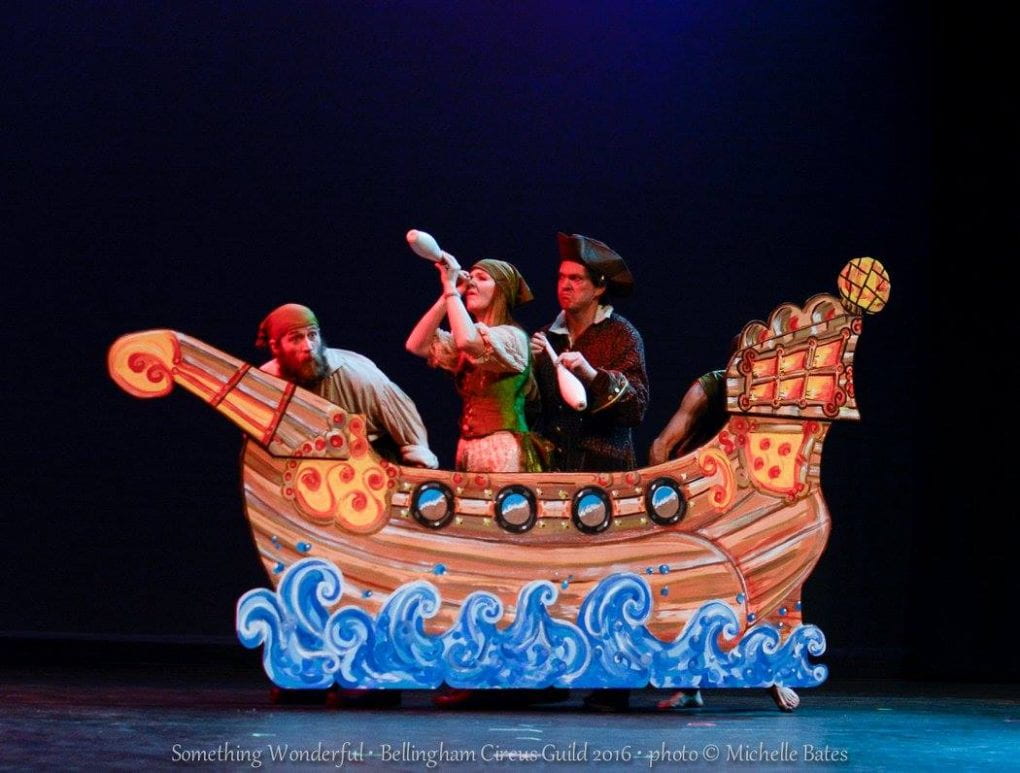
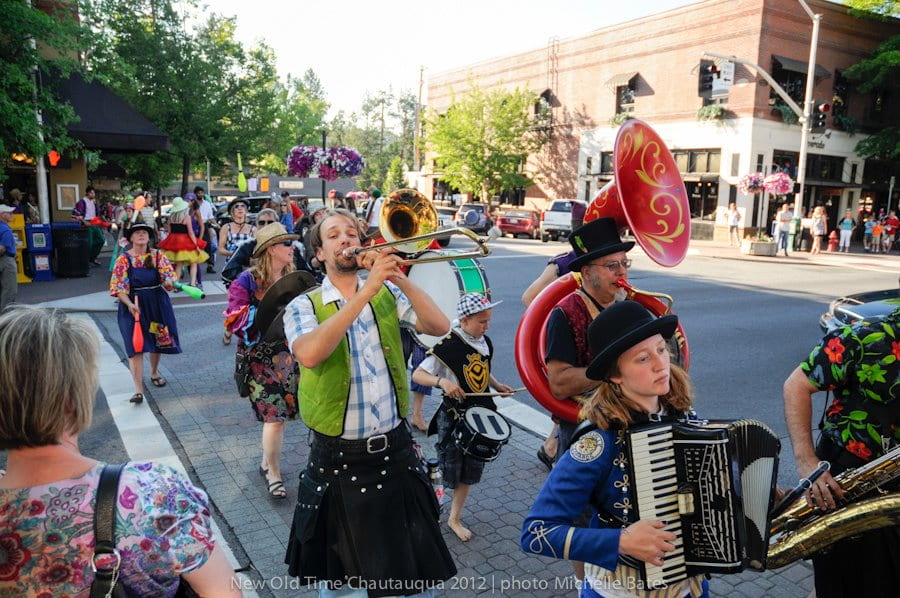
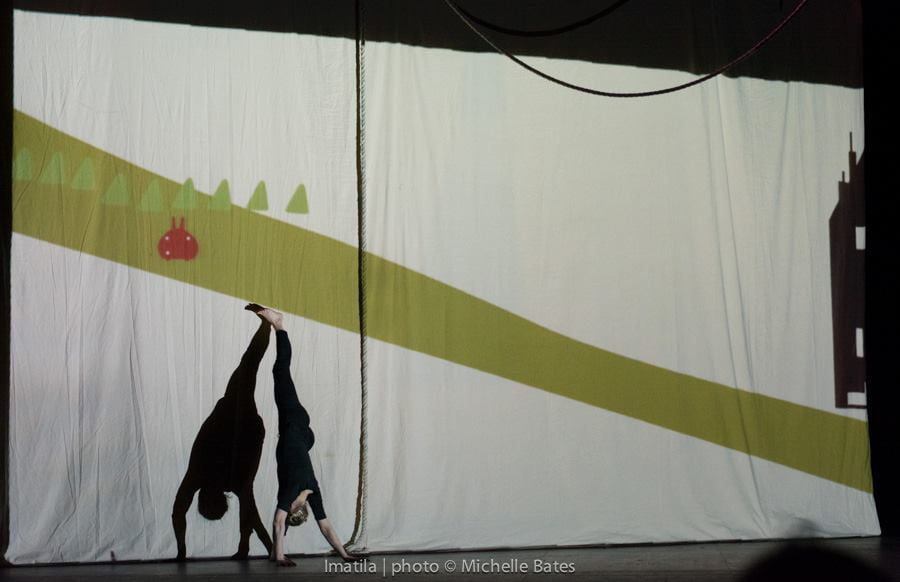
Do you have any advice for current or future students who are just learning photography (general advice for students who think they’re drowning)?
God, it is overwhelming. It’s really overwhelming; the technology and the choices of the formats and how to get the stuff out there. Y’know, find what resonates with you. It depends on what you want to do, but as an artist you get to choose and the question is what do you want to spend your time doing. That’s the most important question. Cause people are like, “Hey, you can get images that look like Holga images on Photoshop”, and so then the question is what do you want to spend your time doing? Do you want to be out in the world with a Holga – which is hilarious, this little, light ridiculous camera. Even me, after all these years, I go out there and you just go Click! and it has this little spring for a shutter and it makes this absolutely ridiculous little noise and there’s no screen to look at and so there’s nothing to adjust on the camera so you just shoot. It’s completely different from my digital camera where you can spend ALL day looking at all the menus and playing with all the settings and looking back at the images, right? So you can take a digital image in the same spot and you can spend all day playing and fiddling with it then you can edit it on the computer and desaturate it and you can do all these things to make it look like a Holga image. It’s just a different experience.
You do not have to make money to be an artist, it is not necessary. You can make art the rest of your life, store it in a room, give it away to people. You’re still an artist and you can enjoy the process. So don’t judge yourself how well it sells because being a professional artist is a completely different thing than just being an artist. One isn’t necessarily better than the other, so you can make art that you love for the rest of your life that nobody else likes. People use making money off of our art as too much of a judgment of whether it’s worthwhile to be doing the art. If you can’t make money off of it, do something else for money, get another job. But it doesn’t mean you shouldn’t keep doing it. But if you want to make money and that’s your goal then you have to treat it as such. You have to take the classes and you have to learn marketing and how to run a business. Take that seriously, but don’t assume just because you’re a really good artist that people are going to walk into your house out of the blue and offer you money and gallery shows cause that’s not going to happen, you have to get out there and sell it.
Look at Artist Trust, [an organization in Washington state that offers classes, courses and workshops in the business of being an artist] and their resources and these classes that they offer, so just understand there’s a difference between being an artist and making a living as an artist and that they’re just different things and they get mushed together. Like “Oh I’m an artist, so I should sell my work. Oh nobody is buying my work so I’m not really an artist so I should stop doing it.” That’s how it happens way too often. Understand the difference, understand why they’re not related and you can still love art and doing it and just choose that’s not what you’re gonna do with the rest of your time. In France, you can get an income as an artist from the government to do art and that’s just a sucky thing about this society that artists are not supported by the society. So you have to make choices around that and if you’re realistic about it then maybe you can set yourself up in a way with a job that’s flexible that allows you to do your art and stuff like that.
Any recommended places to take photos here in Bellingham? Like in general, since students are typically shooting in Bellingham.
I want to say that’s a good question, but we were just talking about how “That’s a good question” has become this weird phrase that doesn’t really mean anything, but it is! It is way harder to make pictures in your own home town, one because Bellingham isn’t as colorful as vacation spots, but you’re also not used to seeing through an outsider’s eye. It is very difficult, but imagine you come from India, or Iceland or somewhere really different and you’d come to Bellingham and find it interesting and beautiful. Images don’t have to be beautiful and you come and look at it from an outsiders eye, and so that’s the trick. Because when you’re just trying to get to school, you’re not looking at it that way. So you have to go out on a photo walk or an artist walk and put yourself in that mindset to go out and shoot. And you’ll see things very differently than you do in daily life. So I can’t say any particular place, if you want trees, go to Whatcom Falls Park or Hundred Acre Wood or wherever. But basically the difference isn’t in the place, it’s in your eyes and how you’re seeing
So no, I can’t tell you what to shoot, but I can tell you to put on your artist-eyes. Whatever that takes. It might mean don’t take anyone with you, it might mean drink 5 cups of coffee, or smoke a joint, or whatever it is. Just make sure there’s nothing else on your agenda. Schedule yourself for 2 hours of just wandering around looking. You can try it downtown, you can try it in the park, the water. Sometimes there’s detail work too, like taking pictures of the bricks of the Whatcom Museum. Go from the micro to macro.
But there’s definitely shooting in your environment is a good exercise and if you’re stuck doing it because that’s where you live and you have to shoot during this quarter, then try all those things and then look what you come up with and see both what you respond to and because you’re in classes, what do other people respond to. That’s the cool thing about being in classes because people can point stuff out to you that you didn’t see; “Oh hey! That’s a cool image!” and you’re like, “Oh, really? It’s just a puddle?”, “That’s a really cool Puddle!”
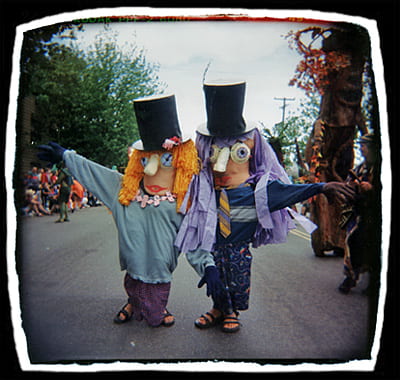

All photos used in this post were pulled from Michelle’s website: https://michellebates.net/index.php
The thumbnail image is Veggie Head from the Exquisite Decay collection.
